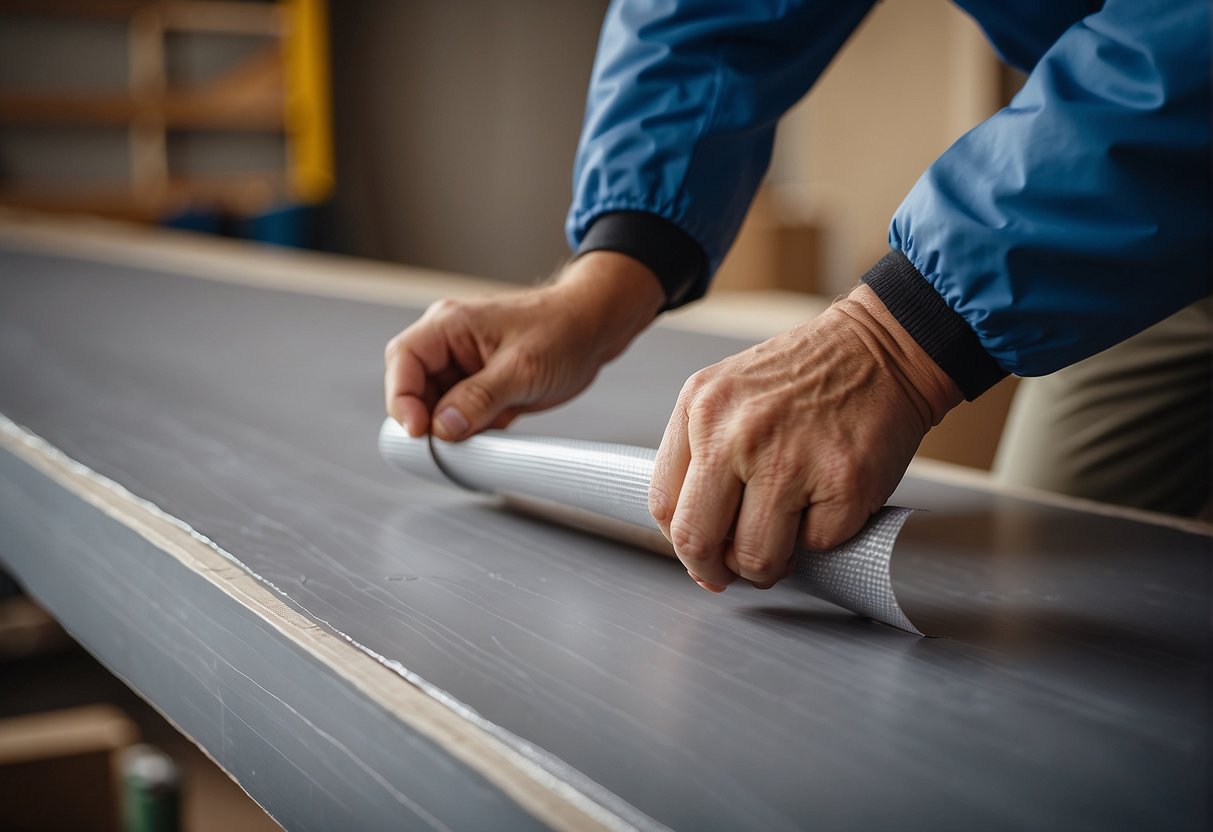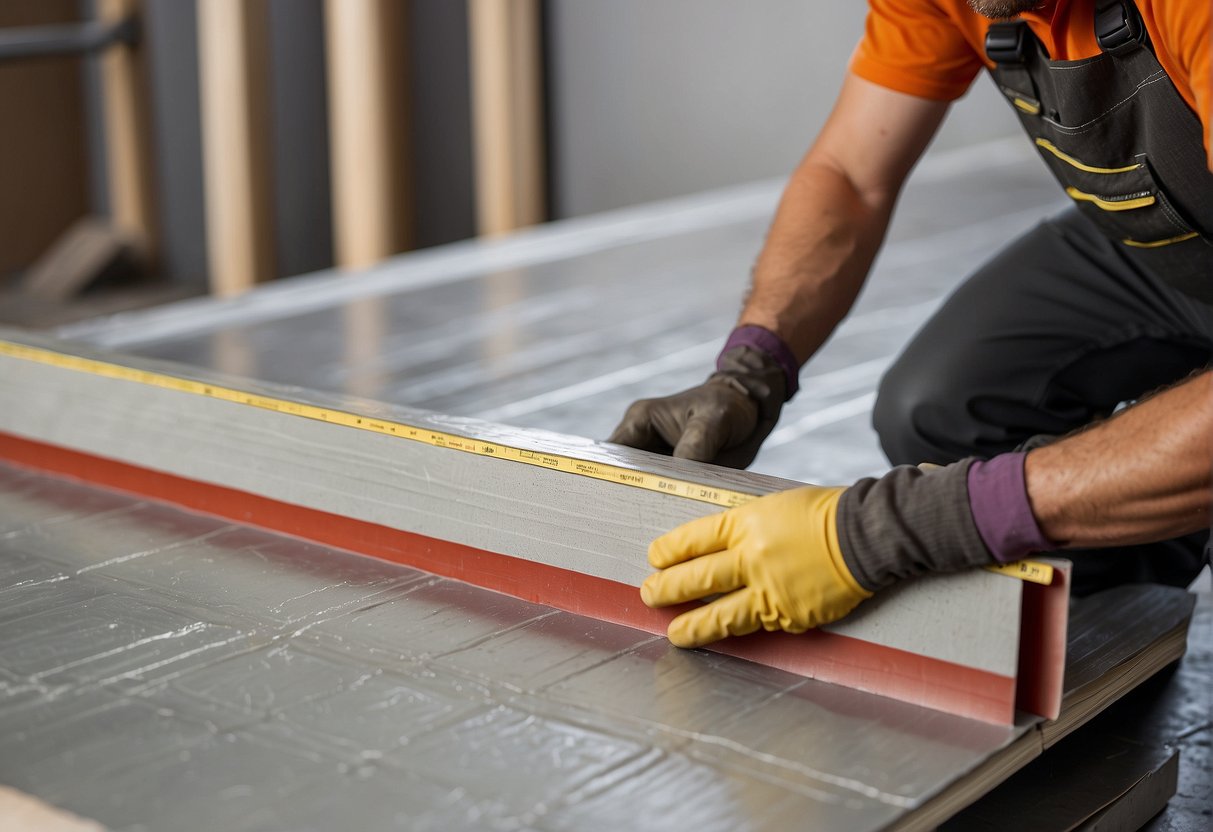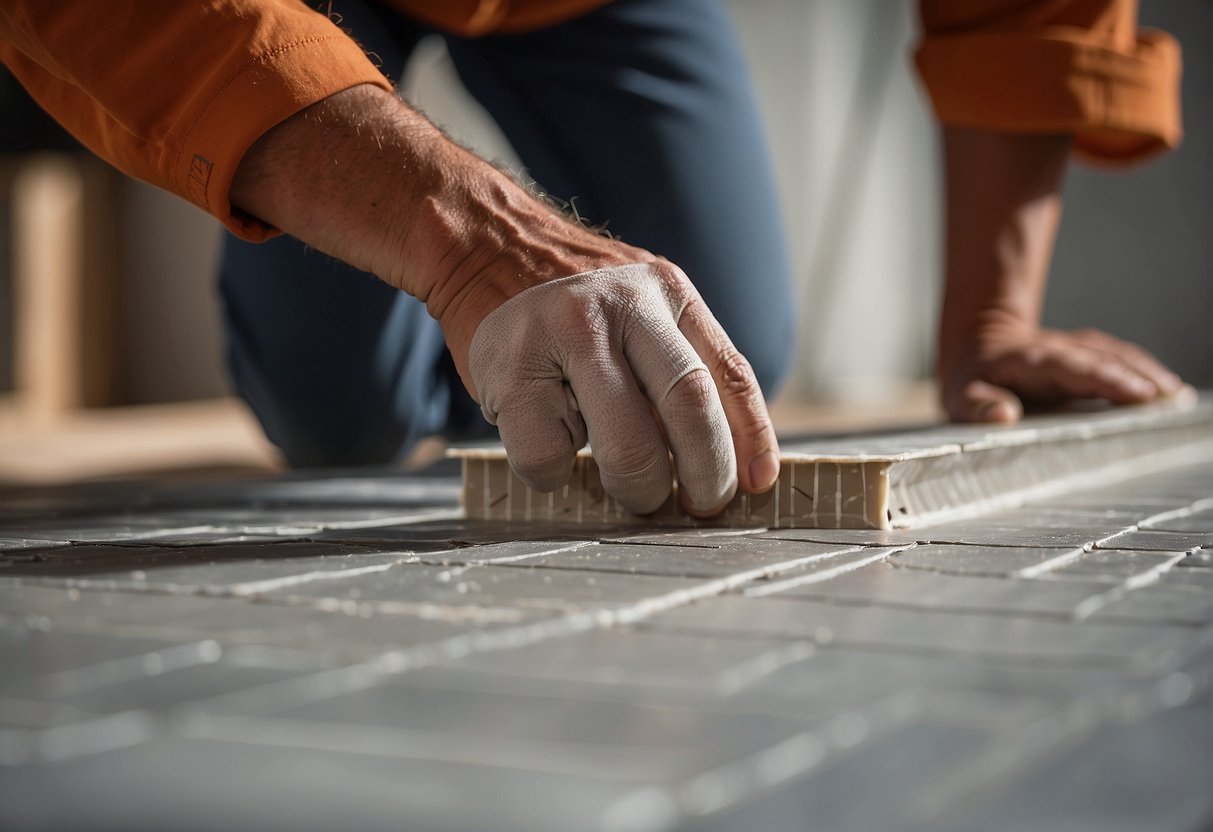As a homeowner or contractor, you may be wondering whether you can use Redgard seam tape on cement board. The answer is yes, and this article will provide you with all the information you need to know about using Redgard seam tape on cement board for waterproofing.
Understanding Cement Board and Its Role in Waterproofing
First, it’s important to understand what cement board is and its role in waterproofing. Cement board is a type of backer board made of cement and reinforcing fibers that is used as a substrate for tile and stone installations. It is highly resistant to moisture and is an ideal choice for areas that are prone to water exposure, such as bathrooms and showers. However, to ensure complete waterproofing, it’s important to take additional steps, such as applying Redgard and seam tape.
Preparation of Cement Board for Waterproofing
Before applying Redgard and seam tape, it’s important to properly prepare the cement board. This includes ensuring that the surface is clean, dry, and free of any debris or dust. Any gaps or holes should be filled with a cement-based patching compound and allowed to dry completely. Once the surface is prepared, you can move on to applying Redgard and seam tape.
Key Takeaways
- Cement board is highly resistant to moisture, but additional waterproofing steps are necessary for complete protection.
- Proper preparation of the cement board is crucial before applying Redgard and seam tape.
- Redgard seam tape can be used on cement board to enhance its waterproofing capabilities.
Understanding Cement Board and Its Role in Waterproofing
As a professional in the construction industry, I know that cement board is a popular material used as a substrate for tile and stone in wet areas such as bathrooms and kitchens. Cement board is a cementitious backer board that is available in various thicknesses and sizes. It is made from cement, sand, and fiberglass mesh, which gives it excellent strength and durability.
Types of Cement Board
There are several types of cement board available in the market, including Durock, HardieBacker, Wonderboard, and Permabase. Each type of cement board has its unique features and benefits, but they all serve the same purpose of providing a stable and durable substrate for tile and stone.
Importance of Waterproofing Membrane
While cement board is an excellent substrate for tile and stone, it is not entirely waterproof. Water can still penetrate the cement board, which can lead to mold, mildew, and other water-related issues. To prevent these problems, it is essential to use a waterproofing membrane over the cement board.
One popular waterproofing membrane is RedGard. It is a liquid-applied elastomeric membrane that creates a continuous waterproof barrier over the cement board. RedGard is easy to apply and can be used on various substrates, including cement board.
However, it is essential to note that RedGard alone is not enough to waterproof a shower or bathroom. It is also necessary to use RedGard seam tape over the joints and corners of the cement board to ensure complete waterproofing.
In conclusion, cement board is an excellent substrate for tile and stone, but it is essential to use a waterproofing membrane over it to prevent water damage. RedGard is a popular choice for waterproofing membrane, but it is crucial to use RedGard seam tape over the joints and corners of the cement board to ensure complete waterproofing.
Preparation of Cement Board for Waterproofing
When it comes to waterproofing cement board, proper preparation is key to ensure a long-lasting and durable installation. In this section, I will discuss the tools and materials needed as well as the surface preparation required for waterproofing cement board.
Tools and Materials Needed
Before starting the waterproofing process, make sure you have the following tools and materials ready:
- Cement board
- Trowel
- Mortar or thinset
- Screws
- Mesh tape
- Waterproof membrane
Surface Preparation
The first step in preparing the cement board for waterproofing is to ensure that the surface is clean, dry, and free of any debris. Use a vacuum or a broom to remove any dust or debris from the surface.
Next, apply a layer of mortar or thinset to the cement board using a trowel. Make sure to spread the mortar or thinset evenly across the surface.
Once the mortar or thinset is applied, use screws to secure the cement board to the framing. Make sure to space the screws evenly and drive them flush with the surface of the cement board.
After securing the cement board, apply mesh tape to all of the seams and corners. This will help to reinforce the cement board and prevent any cracks from forming.
Finally, apply a waterproof membrane to the surface of the cement board. This will help to prevent any water from penetrating the surface and causing damage.
By following these steps, you can ensure that your cement board is properly prepared for waterproofing and will provide a long-lasting and durable installation.
Application of Redgard on Cement Board
When it comes to waterproofing cement board, Redgard is a popular choice. Redgard is a liquid-applied elastomeric membrane that creates a continuous waterproof barrier. It can be used on various substrates, including cement board, to provide an additional layer of protection against water damage. In this section, I will discuss the application of Redgard on cement board.
Mixing and Applying Redgard
Before applying Redgard, it is important to prepare the surface of the cement board. The surface should be clean, dry, and free of any dust or debris. Once the surface is ready, Redgard can be mixed according to the manufacturer’s instructions. It is recommended to use a drill with a mixing paddle to ensure the mixture is thoroughly blended.
Redgard can be applied using a roller or brush. A 3/4 inch nap roller is recommended for best results. The first coat should be applied in a thin, even layer. It is important to work quickly, as Redgard dries fast. The second coat should be applied perpendicular to the first coat, after the first coat has dried. This will ensure complete coverage and a continuous waterproof barrier.
Drying Time and Number of Coats
Redgard dries quickly, typically within 1-2 hours, depending on the temperature and humidity. It is important to wait until the first coat is completely dry before applying the second coat. The second coat can be applied as soon as the first coat is dry to the touch.
It is recommended to apply two coats of Redgard on cement board for optimal waterproofing. However, if the substrate is particularly porous, a third coat may be necessary. It is important to wait for each coat to dry completely before applying the next coat.
In conclusion, Redgard is an effective way to waterproof cement board. When applying Redgard, it is important to prepare the surface properly, mix the product according to the manufacturer’s instructions, and apply the product in thin, even coats. By following these guidelines, you can ensure that your cement board is fully protected against water damage.
Installing Redgard Seam Tape
When it comes to installing Redgard Seam Tape on cement board, there are a few things to keep in mind to ensure proper placement and sealing for extra protection.
Proper Placement on Seams and Corners
To properly install Redgard Seam Tape, it is important to first apply a layer of thinset mortar to all seams and corners using a notched trowel. This will help to ensure that the tape adheres properly and remains in place.
Next, apply the Redgard Seam Tape over the seams and corners. The tape is specifically designed to be used with Redgard Uncoupling Mat and Fabric Membrane to provide waterproofing and vapor barrier protection. It is important to make sure that the tape is centered over the seam or corner and that it is pressed firmly into place to ensure a tight seal.
Sealing for Extra Protection
While Redgard Seam Tape is designed to provide waterproofing and vapor barrier protection on its own, it is always a good idea to add an extra layer of protection. This can be done by applying a bead of silicone caulk over the top of the tape after it has been installed.
In addition, some contractors prefer to use alkali-resistant mesh tape or fiberglass mesh tape in conjunction with Redgard Seam Tape for added strength and durability. This can be particularly useful in high-traffic areas or in areas where there is a lot of moisture.
Overall, when installed properly, Redgard Seam Tape can provide excellent protection against water damage and vapor transmission on cement board surfaces. By following the proper installation procedures and taking the time to seal the seams and corners, you can ensure a long-lasting, leak-free surface.
Finishing Touches and Tile Installation
Applying Tiles Over Redgard
Once the Redgard has been applied to the cement board and has dried, it is time to install the tiles. It is important to note that the Redgard should not be used as an adhesive for the tiles. Instead, a thin-set mortar should be used to adhere the tiles to the Redgard-coated cement board.
Before applying the thin-set mortar, it is recommended to use a notched trowel to apply a layer of thin-set mortar to the back of the tiles. This will help to ensure a strong bond between the tiles and the cement board.
When installing the tiles, it is important to use spacers to ensure that there is an even gap between each tile. This will help to ensure that the finished product looks professional and polished.
Grouting and Sealing
Once the tiles have been installed, it is time to grout the gaps between them. It is important to use a grout that is compatible with the Redgard. Additionally, it is recommended to use a grout that is stain-resistant and easy to clean.
After the grout has been applied and has dried, it is important to seal the grout to protect it from moisture and stains. A high-quality grout sealer should be used for this purpose.
Overall, when installing tiles over Redgard-coated cement board, it is important to follow the manufacturer’s instructions and use high-quality materials. By taking the time to properly install and seal the tiles, you can ensure that your finished product will be both beautiful and long-lasting.
Frequently Asked Questions
Is it necessary to apply Redgard over cement board in wet areas like showers and bathrooms?
No, it is not necessary to apply Redgard over cement board in wet areas like showers and bathrooms. Cement board is already waterproof and provides adequate protection against water seepage. However, it is important to properly waterproof seams during installation to ensure a water-tight seal.
How do you properly waterproof seams on cement board during installation?
To properly waterproof seams on cement board during installation, add self-adhesive alkali-resistant fiberglass tape to all the seams where cement board panels meet. Apply a thin layer of thin-set mortar and smooth out any bumps. Use a level to check for peaks or valleys and fix them if necessary. Once the mortar has dried, apply a waterproofing membrane like RedGard Seam Tape over the seams, extending the tape a few inches beyond the seams on both sides.
What is the primary purpose of RedGard Seam Tape?
The primary purpose of RedGard Seam Tape is to provide additional waterproofing protection to seams in moisture-prone areas like bathrooms and showers. It is designed to work with RedGard Waterproofing and Crack Prevention Membrane to create a continuous waterproof barrier over cement board surfaces.
Can RedGard be applied directly onto cement board surfaces?
Yes, RedGard can be applied directly onto cement board surfaces. However, it is important to properly waterproof seams before applying RedGard to ensure a water-tight seal.
Should cement board be sealed before tiling, especially in moisture-prone areas?
No, cement board does not need to be sealed before tiling, especially in moisture-prone areas. Cement board is already waterproof and provides adequate protection against water seepage. However, it is important to properly waterproof seams during installation to ensure a water-tight seal.
Is waterproofing Durock or similar cement board required before tiling in a shower?
No, waterproofing Durock or similar cement board is not required before tiling in a shower. Cement board is already waterproof and provides adequate protection against water seepage. However, it is important to properly waterproof seams during installation to ensure a water-tight seal.

Hi, I’m Sal Muller of Tooltrip.com. My DIY experience led me to understand essential power tools for home projects. Tooltrip.com guides enthusiasts and professionals in choosing right tools for any job. I provide concise top tool reviews for easier, efficient DIY.




